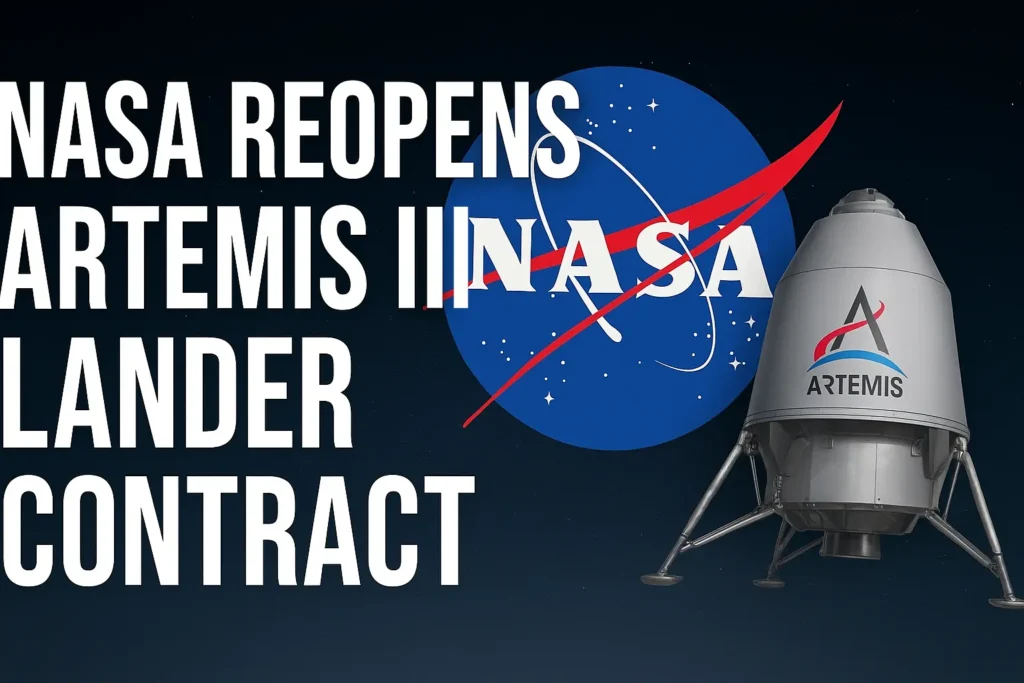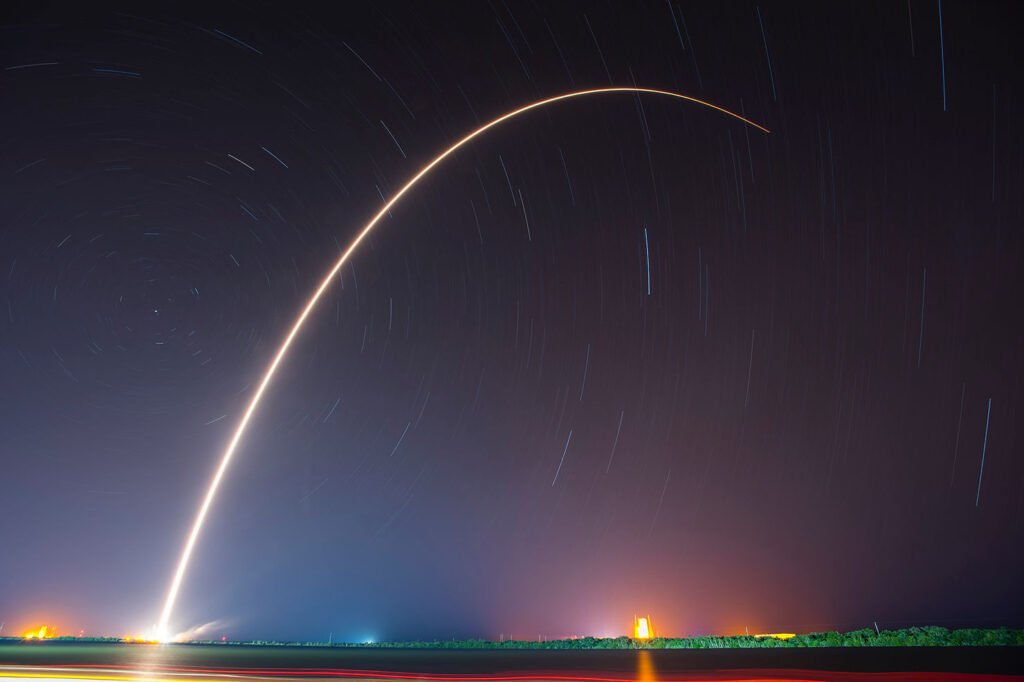NASA is reopening the contract for its Artemis III lunar lander, a move that reintroduces competition into one of the agency’s most high-profile human spaceflight programs. The decision marks a significant strategic shift for the Artemis initiative, which aims to return American astronauts to the lunar surface later this decade.
The announcement came from Acting NASA Administrator and U.S. Transportation Secretary Sean Duffy, who confirmed that the agency is “in the process of opening that contract up” to new bids. Speaking to reporters, Duffy said the change is intended to “ensure competition among American companies to see who can get us back to the Moon first.”
Background: SpaceX’s Exclusive Role and Program Delays
SpaceX was originally awarded the sole Human Landing System (HLS) contract in 2021, valued at nearly $3 billion, to develop a lunar variant of its Starship vehicle. The spacecraft would ferry astronauts from lunar orbit down to the Moon’s surface as part of Artemis III—the first crewed lunar landing since Apollo 17 in 1972.
While Starship has achieved a series of integrated test flights, its development has fallen behind the original schedule. The program’s complexity, coupled with ongoing regulatory reviews and the need for multiple in-orbit refueling demonstrations, has contributed to growing concerns inside NASA that Artemis III’s target launch window—once projected for late 2027—may slip further into 2028 or beyond.
“SpaceX continues to make progress, but there are inherent risks in relying on a single provider for such a complex mission,” a NASA official familiar with the decision said. “Opening up competition gives the agency more flexibility and mitigates potential schedule bottlenecks.”
New Competitive Framework
Under the revised plan, NASA is soliciting what it calls “acceleration approaches” from SpaceX and other potential providers, including Blue Origin, which already holds a separate contract for the Artemis V lander. Companies have until late October to submit proposals outlining how they could accelerate development while meeting NASA’s safety and mission requirements.
The agency is also preparing a broader Request for Information (RFI) to gather input from the commercial sector on alternative designs, architectures, and cost structures. While NASA has not yet specified whether it intends to award multiple contracts, officials say the goal is to “increase redundancy and resilience” in the human lunar landing architecture.
Strategic and Political Context
The timing of the move underscores NASA’s growing urgency to maintain leadership in lunar exploration amid intensifying international competition. China’s space program is advancing rapidly toward its goal of placing taikonauts on the Moon before 2030 through the Chang’e program, potentially challenging U.S. dominance in human spaceflight for the first time since the Apollo era.
“NASA cannot afford to be complacent,” said Laura Forrester, a space policy analyst at the Center for Strategic Aerospace Studies. “Opening Artemis III to competition is both a technical and geopolitical decision—it signals that the U.S. intends to stay ahead, even if it means reshuffling program priorities.”
Industry Reaction
Industry response has been mixed. Advocates for open competition argue that the move will encourage innovation and reduce risk. Critics warn that introducing new contractors this late in the program could complicate integration and strain NASA’s already tight budgets.
SpaceX has not publicly commented on the announcement but continues testing its Starship architecture from its Boca Chica, Texas site. Blue Origin, meanwhile, has maintained a steady pace on its Blue Moon lander program, which could be adapted for earlier use if NASA requests it.
On social media and within the spaceflight community, reactions range from cautious optimism to skepticism. Users on the r/SpaceX forum questioned whether any new entrant could realistically deliver a lunar-capable vehicle faster than SpaceX, given its head start and flight heritage.
Implications for Artemis III and Beyond
NASA’s decision introduces uncertainty into the Artemis III schedule but may ultimately strengthen the program’s foundation by diversifying its industrial base. It also aligns with a broader agency strategy emphasizing commercial partnerships and competition—an approach that has yielded success in cargo and crew transportation to the International Space Station.
“The real test will be whether this competition accelerates progress or adds new layers of complexity,” said Forrester. “Either way, it’s a reminder that the next race to the Moon isn’t just international—it’s between America’s own space companies.”
For now, Artemis III remains officially slated as the mission to return humans to the lunar surface. But with the lander contract reopened and multiple players back in the running, the path to that first step is once again up for grabs.



